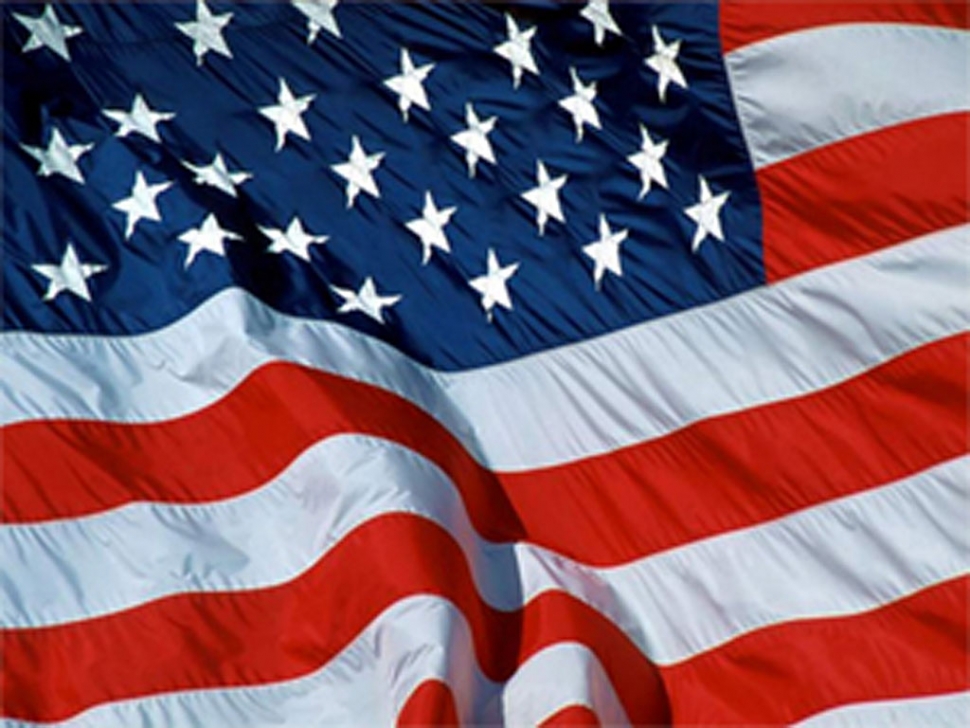|
Though Silent, It Speaks to Us
 By Tom Pedersen — Wednesday, June 10th, 2009
Sunday is Flag Day in the United States. It is a time when all Americans should take time to reflect and ponder on what exactly our flag means and symbolizes. On June 14, 1917 President Woodrow Wilson, upon declaring Flag Day a holiday, reminded the nation, "This flag, which we honor and under which we serve, is the emblem of our unity, our power, our thought and purpose as a nation. It has no other character than that which we give it from generation to generation. The choices are ours. It floats in majestic silence above the hosts that execute those choices, whether in peace or in war. And yet, though silent, it speaks to us - speaks to us of the past, of the men and women who went before us, and of the records they wrote upon it." In recent history, the flag has been considered as an inspiration to those brave souls who risked everything for their country, family, and freedom. One of the most prominent features in the famous painting by Emanuel Leutze of Washington crossing the Delaware on Christmas Day of 1776 is that of the flag accompanying the patriots into battle. In the War of 1812 Francis Scott Key recorded from the deck of a British Navy ship, "And the rockets' red glare, the bombs bursting in air, gave proof through the night that our flag was still there. O! say does that star-spangled banner yet wave O'er the land of the free and the home of the brave." During the long and bloody Civil War the troops on both sides were led into battle by soldiers carrying their respective flags. As long as the soldiers could see the flags they were inspired to fight on. If the flag bearer was killed, another soldier would pick it up and proceed forward rallying the troops to press on. If a flag was captured by the adversary it was a sign that the battle was lost. In February of 1945, a contingent of United States Marines landed upon the beaches of Iwo Jima a small but strategically important island in the Pacific Ocean. The ensuing battle resulted in one of the bitterest and costly battles of World War II. Approximately 7,000 Marines lost their lives with another 20,000 being wounded. The heroism shown by these men is unparalleled in American history. Twenty-seven men were awarded Medals of Honor for their actions. As these gallant men from our Greatest Generation fought their way to the top of the highest point on the island, Mount Suribachi, they found a twenty-foot section of pipe and attached the flag to it which they raised for all to see - both friend and foe. The photograph taken of the flag flying freely in the breeze on Mount Suribachi would become a monument to those men and would inspire those in the service of this country for the remainder of that war and all those since then. When fallen patriots are returned home to their final resting places, their caskets are accompanied by a military escort and are draped with the flag for which they made the ultimate sacrifice. Prior to the interment that flag is presented to the family from a grateful nation as a token of its gratitude. That flag is not merely a brightly colored piece of cloth - it is a symbol of everything that we as Americans stand for - it is a monument to all of those who fought and died to preserve our life, liberty, and pursuit of happiness. It is a monument that should be protected from desecration just the same as the monuments that mark the graves of our fallen heroes. We would never tolerate the desecration of the Lincoln Memorial or the Tomb of the Unknown Soldier and should never allow the desecration of our flag which is, among other things, a memorial to the over one million Americans who have made the ultimate sacrifice to keep it flying proudly and free. As an unknown author aptly stated, "The whole inspiration of our life as a nation flows out from the waving folds of this banner." |
